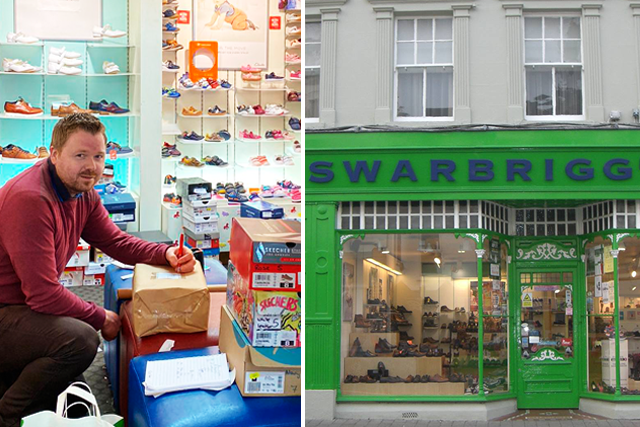You’ve made the resolution, you’re conviction to start walking more has brought you to checking out Swarbriggs Shoes online and while the shop may be closed for the moment, the team at Swarbriggs Shoes are available on the phone (044 934 8298) to “walk you through” your quest for a pair of good walking shoes.
Ordering online is very easy and Swarbriggs Shoes are offering free delivery nationwide for orders over €45.
Remember, walking shoes have some features that other general sports shoes don’t have. Wearing walking shoes that are comfortable and fit your feet can help prevent injuries such as blisters and calluses. A walking shoe should also be fairly lightweight and provide good shock absorption. But not all walking shoes are created equal. Find the fit and features that are right for you.
Feet come in many shapes and sizes. Remember, your shoes should conform to the shape of your feet. Your feet should never be forced to conform to the shape of a pair of shoes.
Features of a Walking Shoe
How a shoe is built makes a difference in its fit and function. Knowing the basic parts of a walking shoe can help you sort through the many available styles and brands.
• Achilles tendon protector: reduces stress on the Achilles tendon by locking the shoe around the heel.
• Heel collar: cushions the ankle and ensures proper fit.
• Upper: holds the shoe on your foot and is usually made of leather, mesh or synthetic material. Mesh allows better ventilation and is lighter weight.
• Insole: cushions and supports your foot and arch. Removable insoles can be laundered or taken out to dry between walking sessions.
• Gel, foam or air midsole: helps cushion and reduce impact when your foot strikes the ground.
• Outsole: makes contact with the ground. Grooves and treads can help maintain traction.
• Toe box: provides space for the toes. A roomy and round toe box helps prevent calluses.
When selecting your shoes, make sure that the width and length are correct. Shoes that are too narrow or too wide can lead to painful blisters and calluses. Bunions and hammertoes are caused by the toe box not offering enough space for your toes.
Arches
Your arches play an important role in how you adapt to various surfaces as you walk. The intricate alignment of bones, muscles, ligaments and tendons in your feet forms side-to-side (metatarsal) and lengthwise (longitudinal) arches. As you walk, these springy, flexible arches help distribute your body weight evenly across your feet.
Most important of all, however, is comfort. The best-designed shoes in the world won’t do their job if they don’t fit properly. Some tips for finding the best fit in a pair of walking shoes are to: wear the same socks you’ll wear when walking, or take the socks with you to the store / shop for shoes after you’ve been walking for a while, and later in the day, when your feet are at their largest / try to have your feet measured each time you buy shoes, because your foot size can change gradually over years.
Stand while your foot is measured to get the most accurate measurement – if one foot is larger than the other, try on a pair that fits your larger foot – always try on both shoes and check the fit. Wiggle your toes.
If you don’t have at least a half-inch (1.3 centimeters) between your longest toe and the end of the shoe — approximately the width of your finger — try a larger-size – walk in the shoes before buying them. They should feel comfortable right away. Make sure your heel fits snugly in each shoe and doesn’t slip as you walk.
Finally, remember shoes don’t last forever and it is important to replace worn-out shoes to prevent injury. A good guide on when to change your shoes would be when the outsole is worn or when you’ve reached 300 to 400 miles of running or walking in your current pair.







